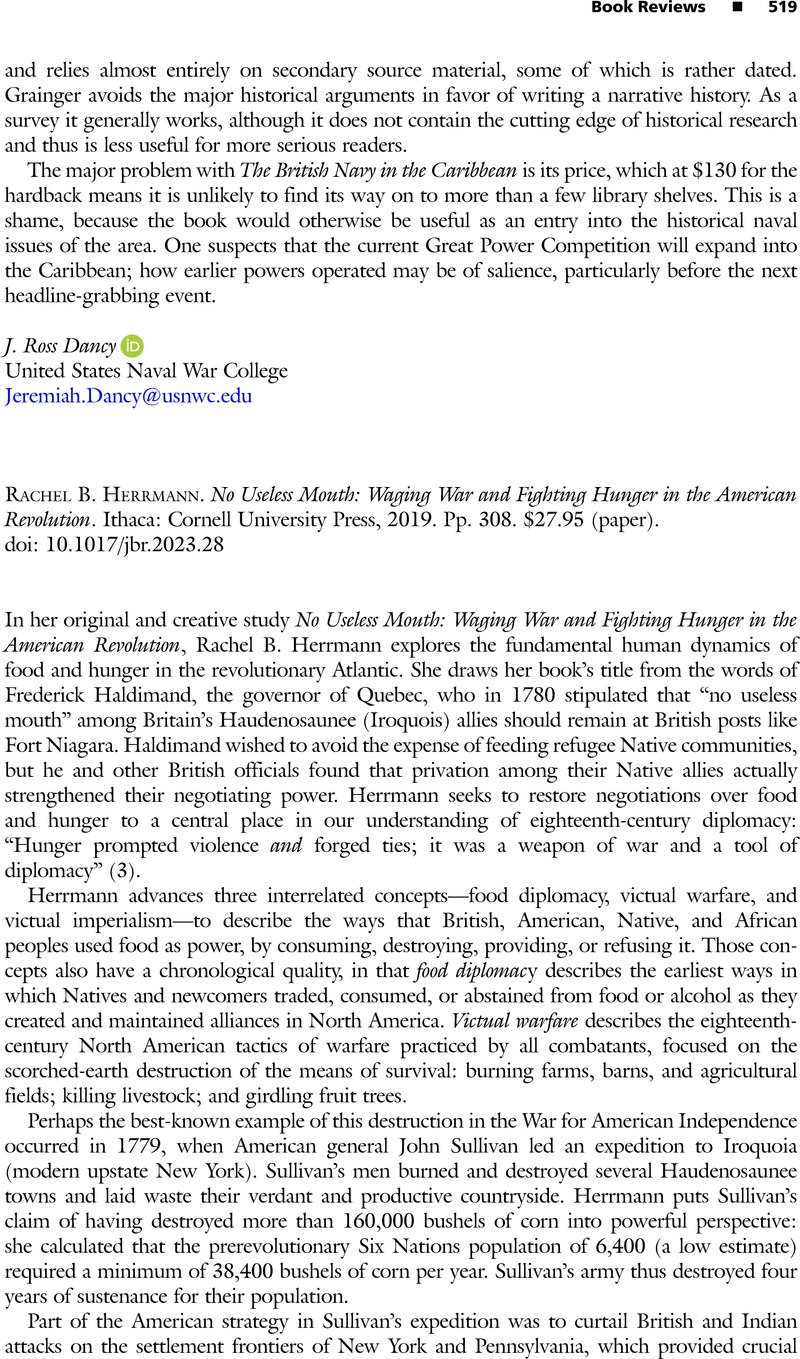No CrossRef data available.
Article contents
Rachel B. Herrmann. No Useless Mouth: Waging War and Fighting Hunger in the American Revolution. Ithaca: Cornell University Press, 2019. Pp. 308. $27.95 (paper).
Review products
Rachel B. Herrmann. No Useless Mouth: Waging War and Fighting Hunger in the American Revolution. Ithaca: Cornell University Press, 2019. Pp. 308. $27.95 (paper).
Published online by Cambridge University Press: 05 June 2023
Abstract
An abstract is not available for this content so a preview has been provided. Please use the Get access link above for information on how to access this content.

Information
- Type
- Book Review
- Information
- Copyright
- Copyright © The Author(s), 2023. Published by Cambridge University Press on behalf of the North American Conference on British Studies


